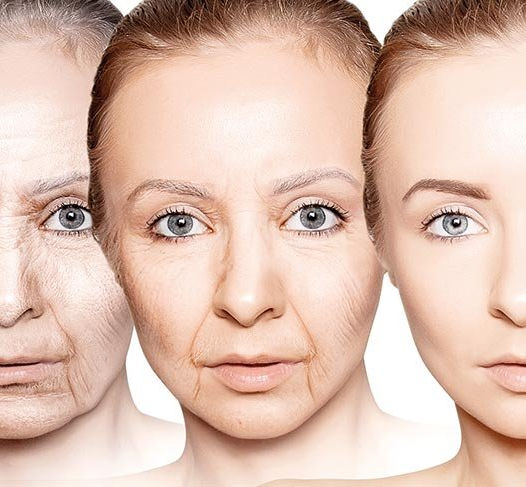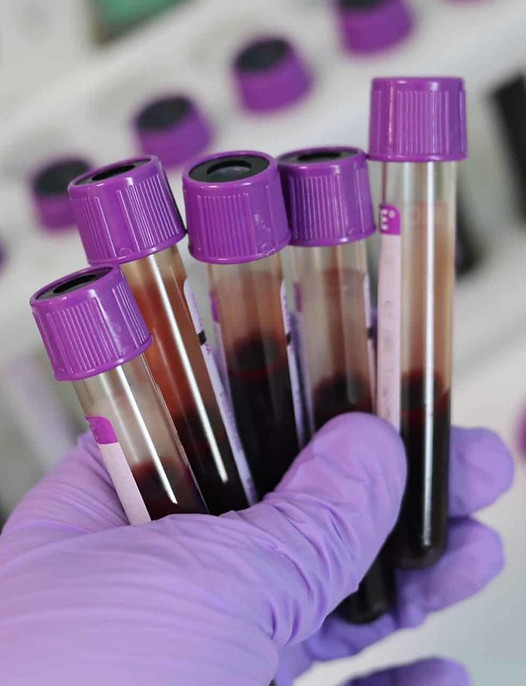
Next Generation Facial Exosome Regeneration

Facial Regeneration
The cellular approach
Aging skin is characterized by a gradual decline in collagen and elastin production, leading to reduced elasticity and firmness. This process is influenced by both intrinsic factors, such as genetics and hormonal changes, and extrinsic factors, including sun exposure and pollution. As skin ages, it may become thinner, drier, and more prone to wrinkles and age spots. Additionally, the skin's ability to retain moisture diminishes, resulting in a rougher texture. Overall, the aging process affects the skin's appearance and functionality, necessitating targeted skincare interventions.
After years of research and clinical practice, we have embraced a more natural approach to cellular regenerative of skin and sub-dermal structures. We begin by harvesting your body's own platelet-rich fibrin (PRF) from a simple blood collection, and then combine the PRF with stem-cell derived exosomes, creating an injectable product.
This same technique is now gaining ground worldwide for many disease processes such as advanced healing for bone and muscle injuries, neurological disorders, adjunctive surgical procedures, and many more applications.




Traditional facial rejuvenation strategies
Facial rejuvenation has a rich history that dates back to ancient civilizations. The Egyptians used natural oils and herbs for skin care, while the Greeks and Romans employed various techniques, including massages and facial masks, to enhance beauty. In the Middle Ages, beauty practices were often linked to social status, with the use of lead-based cosmetics being common, despite their harmful effects.
The 19th century saw the advent of more scientific approaches, with dermatology emerging as a field. The introduction of surgical techniques in the early 20th century, such as facelifts, marked a significant turning point. The development of non-surgical options, including chemical peels and laser treatments, gained popularity in the late 20th century, making facial rejuvenation more accessible.
Today, facial rejuvenation encompasses a wide range of procedures, from minimally invasive treatments like Botox and fillers to advanced surgical options, reflecting ongoing advancements in technology and a growing emphasis on aesthetic enhancement, however many approaches leave much to be desired as often the results appear unnatural or result in undesirable effects. Traditional fillers begin to break-down shortly after they are implanted, have unpredictable results, and are costly to maintain, often requiring multiple injection sessions.

The Procedure
The procedure commences with a straightforward Venus blood collection, succeeded by precise centrifugation to extract platelet-rich fibrin (PRF) blood products. PRF is abundant in growth factors that promote cellular regeneration. Subsequently, a process is undertaken to heat and denature the albumin component of the blood, resulting in the formation of a gel, which is then recombined with the PRF derived products to produce a natural injectable bio-gel filler, referred to as 'the matrix.'
This bio-gel filler is further enhanced with stem-cell-derived exosomes, creating an optimal blend of cellular stimulators that facilitate cellular differentiation.
The final PRF bio-exosome gel is introduced beneath the skin using a cannula, akin to traditional facial fillers. This procedure not only adds volume to the face but also initiates the stimulation of new collagen and elastin, as well as sub-dermal structures, thereby fostering a regenerative and enduring facial rejuvenation.
A comprehensive treatment plan is formulated following an evaluative consultation and may encompass multiple sessions. The average cost for this treatment ranges from $1,800 to $3,600, representing a non-surgical alternative for facial rejuvenation.


An advanced approach to facial and skin rejuvenation
Stem cell derived exosomes are nanoscale, spherical, extracellular vesicles. They are a product from the stem cell resembling a small spherical package containing a unique set of bio-molecules. As the three major exosome databases (i.e., ExoCarta, Vesicle-pedia, and EVpedia) summarize, exosomes contain numerous molecules, including proteins, glycoconjugates, lipids, nucleic acids, metabolites, and other bioactive substances. Basically, these nano-spheres contain the ultimate substances for cellular healing, proliferation, and regeneration.
Prior to clinical applications, exosomes are harvested from stem cells, prepared and optimized in terms of production, purification, and modification utilizing stringent laboratory protocols.
Once exosomes reach the recipient cell, their cargo is utilized by the cell to facilitate regenerative properties.





